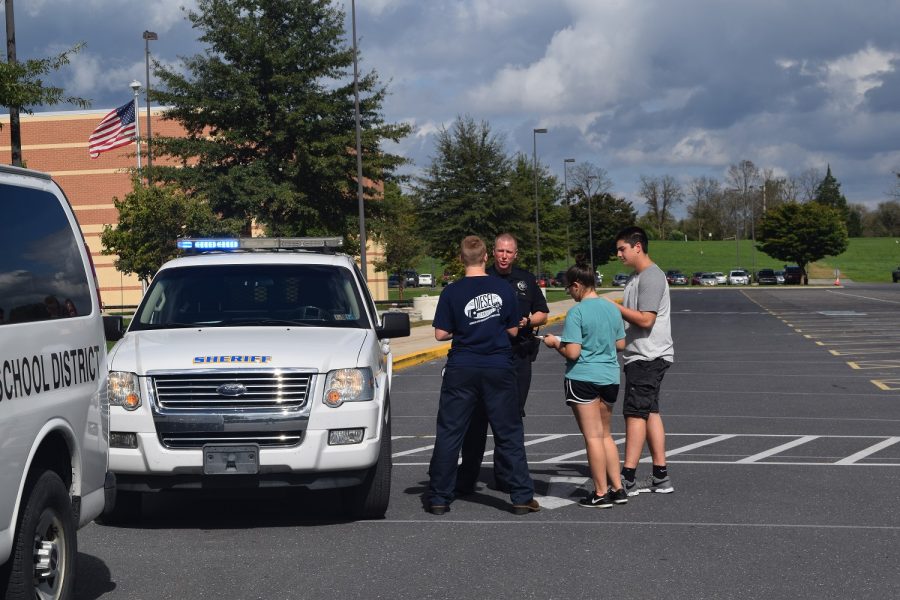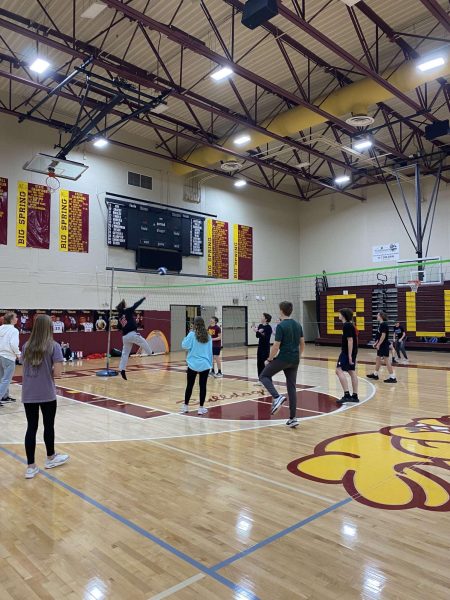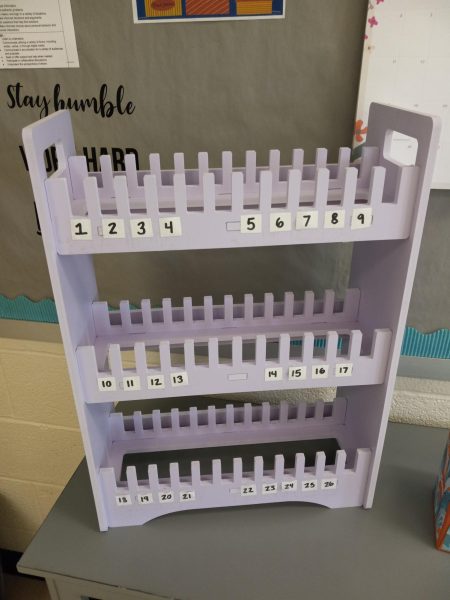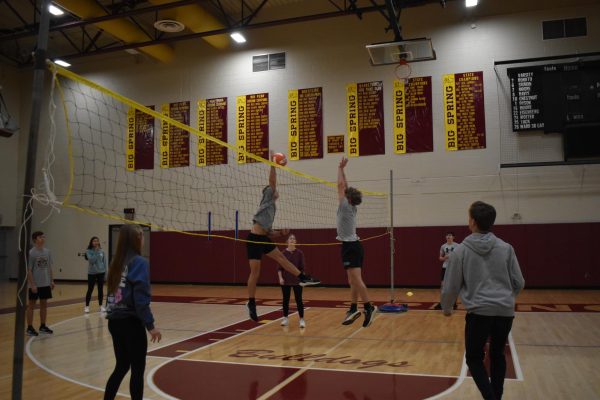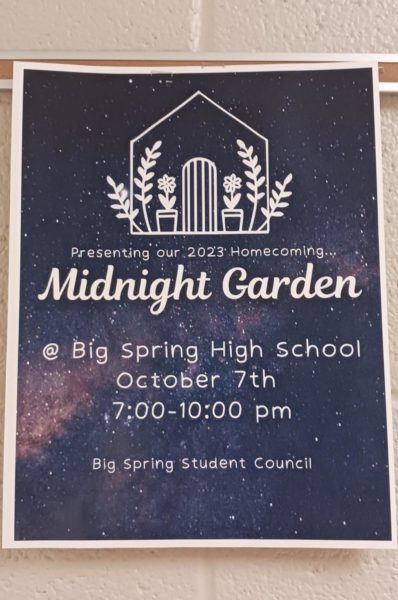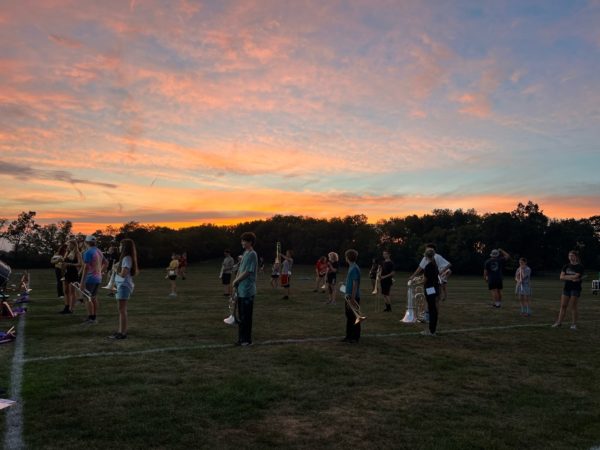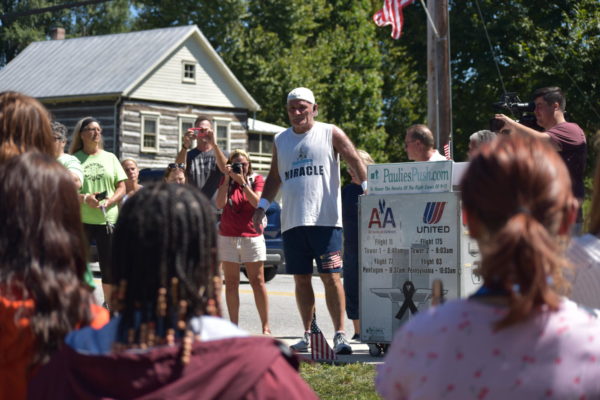Traffic stop simulation engages students
Deputy Brian Gryzboski demonstrates how an officer would approach a vehicle in the event of a traffic stop. Students in each Driver’s Ed class for the past 2 years have had the opportunity to participate in a mock traffic stop lesson.
October 30, 2018
Police sirens and flashing lights in the rearview aren’t usually an eagerly anticipated phenomenon, but for the students in Micah Artz and Matthew Engleman’s Driver’s Ed classes, they meant an opportunity to learn about the ins and outs of a traffic stop through a hands on simulation.
For the past 2 years, Artz and Engleman have worked with Deputy Brian Gryzboski, the School Resource Officer, to walk students in every Driver’s Ed class through a mock traffic stop in the parking lot outside of the Natatorium. In the simulation, Gryzboski utilizes the lights and sirens of his patrol car and pulls up behind a stationary school van full of Driver’s Ed students. He then takes students through the traffic stop process step by step, explaining what documents the police will need, what behaviors and attitudes motorists should have, and why the police do what they do.
“We want students to gain a better understanding of what will keep them safe physically and financially in the event of a traffic stop,” Artz said. “[We chose to incorporate this lesson] because there is such a high probability of being pulled over at some point in one’s driving career.”
Gryzboski said that he’d like the lesson to teach students “how to react and respond in the presence of law enforcement. Cooperate and listen to what the officer tells you to do and things can go very smoothly.”
“I really like the lesson because…we were in it instead of just learning about it,” said sophomore Lindsey Wilson, a student in Artz’s fifth period Driver’s Ed Class. “I learned that we need to stay calm in the cabin when the officer comes up…and that Deputy Gryzboski stands behind the door [of a vehicle] because it could be used as a weapon.” Wilson said she appreciated the lesson and that “without it, I wouldn’t have the understanding I do now.”
Engleman explained that Gryzboski, in addition to the mock traffic stop, participates during a Q and A session with students in Driver’s Ed classes as well. “It’s really handy,” Engleman said, “He can tell you exactly what the law is all about and answer questions from the point of view of a police officer.” Artz said, “We are very fortunate to have that resource.”
While no one looks forward to traffic stops, the hope remains that this lesson will be memorable and helpful in the event of one, keeping both motorists and police officers safe.
